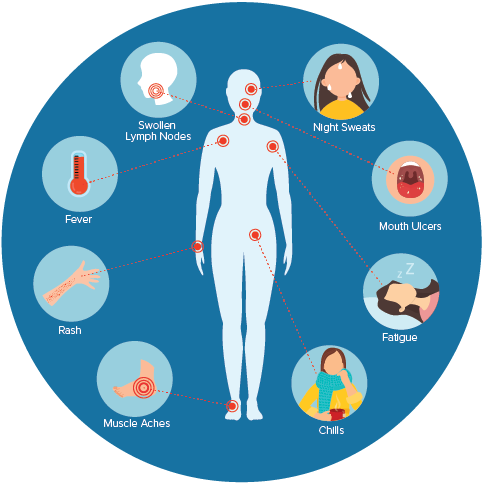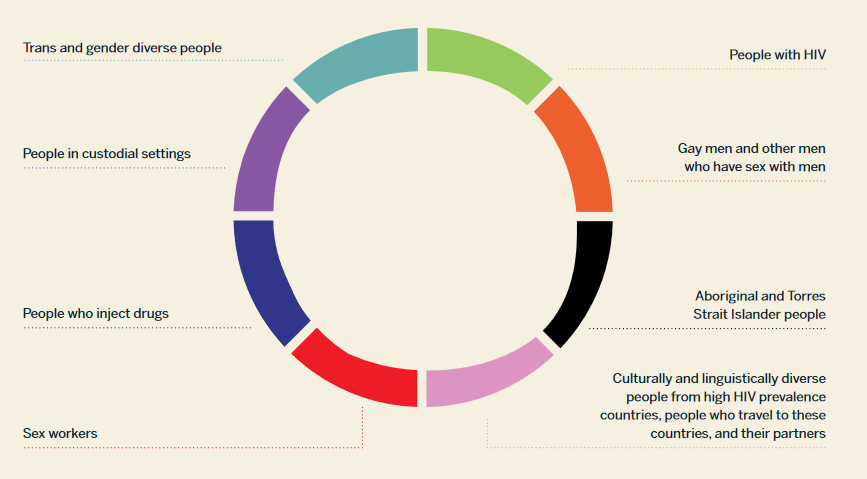Introduction
Human immunodeficiency virus (HIV) is one of the most recognized medical conditions in the world. World Health Organization (2021) defines it as “a major global public health issue, having claimed 36.3 million [27.2–47.8 million] lives so far”. The most disconcerting aspect of this disease is that currently there is no cure. Medical help can alleviate the symptoms and extend the life period of patients, but the virus itself cannot be treated. The number of annual cases and death rate worldwide make this disease have global significance. Understanding what constitutes the risk factors and challenges for the disease is essential in ascertaining the Australian response to the spread of HIV.
Risk Factors
Being a sexually transmitted infection, HIV has similar risk factors. First, unprotected sex may lead to the contraction of the disease. Second, if another sexually transmitted infection is present in the organism, the chances of contracting HIV are higher. Third, using needles, which have already been used on someone, pathogens travel from one bloodstream to another, thus causing the infection. Needles do not have to contain drugs in order for the infection to be transmitted. Medical mistakes and accidental needle sticks can also result in contraction. All of these factors are modifiable, meaning that prevention is the responsibility of each individual. There are also some non-modifiable factors, which limit the ability of a patient to recuperate, which include risk, age, and gender (Mgori et al., 2020). Altogether, prevention measures depend on the people in most cases.
Impact on the Individual
Depending on the stage, HIV symptoms vary from their entire absence to the development of Acquired Immunodeficiency Syndrome. Physical discomfort is varied depending on the type of disease the patient contracts because of their reduced immune system. Most commonly, those who have AIDS experience fever, weakness, weight loss, sweetness, and rashes (Image 1). It is possible that the different types of cancer development due to the inability of the immune system to handle them. Overall, earlier symptoms can be unnoticeable, while the later ones are especially discomforting.

Putting complications aside, the emotional impact on the individual is considerable. First, the realization that HIV may result in AIDS and other diseases is disconcerting (Brown et al., 2016). Second, a person may start fearing social interactions, even if they do not include unprotected sex or needle sharing. Finally, the incurable status of the disease may stress the patient further. Combined together with social factors, HIV negatively influences the emotional well-being of people.
Social implications also play a significant role in the well-being of people with HIV. There is a certain stigma surrounding people who have managed to contract a sexually transmitted disease especially HIV (Brent, 2016). Starting with friends and family, many close people may distance themselves from the HIV-positive individual, further solidifying their social isolation. Moreover, the fact of HIV closes certain job opportunities, which may negatively impact their financial state. Finally, medications are expensive and their consistent consumption may lead to financial problems.
Individual Challenges
As managing HIV requires a steady supply of medications, there is a need for available healthcare services and pharmacies (Evans et al., 2016). People with HIV need consultations with doctors regarding their medical conditions. If they experience health deterioration, they need to quickly consult a specialist in order to prevent further worsening. All of these factors necessitate the availability of healthcare services in the vicinity. Subsequently, their absence leads to a higher challenge for the individual.
In Australia, geographic locations with high incidence are identified. Image 2 showcases the priority populations of HIV in Australia. It should be noted that the graphic does not indicate equality between the groups. Nevertheless, if a person lives in an area with high drug activity, resides in custodial settings, and comes into contact with sex workers, their chance of contracting HIV increases. If the person is not able to change their geographical location, preventing the disease and managing it becomes more problematic.

Strategies
The main document showcasing Australian efforts to stop HIV is the Eigth National HIV Strategy. It details the steps the government takes to contribute to the fight against HIV in 2018-2022 (Department of Health, 2018). Most efforts are put into the prevention and detection of the condition. The documents outline three aims for 2020:
- 90 percent of all people with HIV will know their HIV status,
- 90 percent of all people with diagnosed HIV infection will receive sustained antiretroviral therapy,
- 90 percent of all people receiving antiretroviral therapy will have viral suppression.
Combined together, governmental efforts can be summarized into four categories. The first is raising public awareness and improving education on HIV. The second is the procurement of sterile injecting equipment and corresponding training for the people who make injections. The third is surveillance and collection of data on the prevalence of HIV in the country. The fourth is the research into the ways of treating the infection and facilitation of detection.
Conclusion
Altogether, it should be evident that HIV is prevalent in Australia, and the government recognizes the significance of the disease. Physical impact on the person with HIV may be similar to flu or be absent at all. The emotional impact can cause severe stress and pressure. Social impact can lead to the social isolation of a person with HIV. As no cure exists, the Australian strategy emphasizes prevention, detection, and research, while planning to significantly lower the rate of patients with HIV in the coming years.
References
Brent, R. J. (2016). The value of reducing HIV stigma. Social Science & Medicine, 151, 233-240.
Brown, M. J., Serovich, J. M., Kimberly, J. A., & Hu, J. (2016). Psychological reactance and HIV-related stigma among women living with HIV. AIDS Care, 28(6), 745-749.
CDC. (2021).About HIV.
Department of Health. (2018). Eight National HIV Strategy. Web.
Evans, C., Jones, C. E., & Prendergast, A. J. (2016). HIV-exposed, uninfected infants: new global challenges in the era of pediatric HIV elimination.The Lancet Infectious Diseases, 16(6), 92-107.
Mgori, N. K., Mgori, N. K., & Mash, R. (2020). HIV and/or AIDS-related deaths and modifiable risk factors: A descriptive study of medical admissions at Oshakati Intermediate Hospital in Northern Namibia.African Journal of Primary Health Care and Family Medicine, 7(1), 1-7.
World Health Organization. (2021). HIV/AIDS.